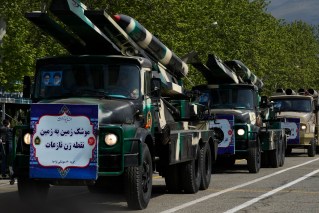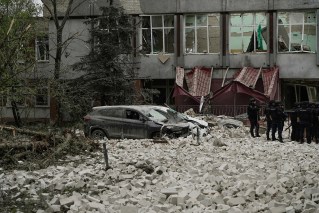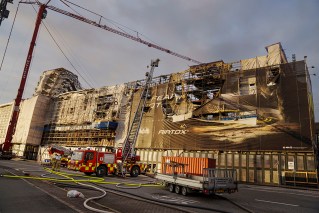Islamic State seizes Syrian town Palmyra
Islamic State group jihadists have seized full control of the ancient Syrian city of Palmyra, putting the world heritage site and its priceless artefacts at risk of destruction.
The Britain-based Syrian Observatory for Human Rights said on Thursday ISIS now controlled half of all territory in the war-torn country.
The capture of Palmyra, a former stopping point for caravans on the Silk Road, is the latest blow to efforts to hold back the advancing jihadists, following the fall of Iraq’s Ramadi.
• ‘Soft approach’ needed on Aussie extremists
• Islamic State claims victory in key Iraqi town of Ramadi
“ISIS fighters are in all parts of Tadmur, including near the archaeological site,” Observatory head Rami Abdel Rahman said, using the Arabic name for the city.
The jihadists also proclaimed their capture of the entire city, which is strategically located at the crossroads of key highways leading west to Damascus and Homs, and east to Iraq.
The Observatory said regime troops had pulled back from positions in and around Palmyra.
The monitor, which relies on a network of sources on the ground, said ISIS now controls more than 95,000 square kilometres of Syria, which has been engulfed by a multi-sided civil war since a 2011 uprising.
The jihadists, notorious for demolishing archaeological treasures since declaring a “caliphate” last year straddling Iraq and Syria, fought their way into Palmyra on foot after breaking through in the city’s north.
“Regime troops collapsed and withdrew from their positions without resistance,” said Mohamed Hassan al-Homsi, an activist originally from Palmyra.
The assault on Palmyra came days after the militants took the Iraqi city of Ramadi.
A US State Department official said the loss of Ramadi would force Washington to take an “extremely hard look” at its strategy against ISIS.
The jihadists sparked international outrage this year when they blew up the ancient Assyrian city of Nimrud and smashed artefacts in the museum of Mosul, both in Iraq.
“The situation is very bad,” Syria’s antiquities chief, Mamoun Abdulkarim, said on Wednesday as ISIS overran the north of Palmyra.
“If only five members of ISIS go into the ancient buildings, they’ll destroy everything,” he added, calling for international action to save the city.
Hundreds of statues and artefacts from Palmyra’s museum have been transferred out of the city, according to Abdulkarim, but many others – including massive tombs – could not be moved.
In neighbouring Iraq, ISIS consolidated its hold on Ramadi, capital of Anbar province, just 100 kilometres west of the capital.
On Wednesday, the Anbar police chief was dismissed, after video footage emerged online suggesting security personnel deserted their posts at the height of the ISIS offensive.
The militants’ gains have sparked international concerns, with France pledging on Wednesday to host high-level international talks next month in Paris over the threat posed by ISIS.
The US official said Washington would step up its aid to Iraq, including sending 1000 anti-tank missile systems to help stop suicide car bombs, and accelerating its training and equipping of tribal forces to fight ISIS.
“You’d have to be delusional not to take something like this and say: ‘What went wrong, how do you fix it and how do we correct course to go from here?’,” the official told reporters.
Asking not to be identified, the official highlighted the ISIS tactic of ploughing huge “vehicle-born improvised explosive devices” (VBIEDs) into buildings and walls.
In Ramadi, an explosives-packed bulldozer was used to blow up the security perimeter around a government-held compound.
Around 30 vehicles such as Humvees then flowed in, many loaded heavily with explosives.








